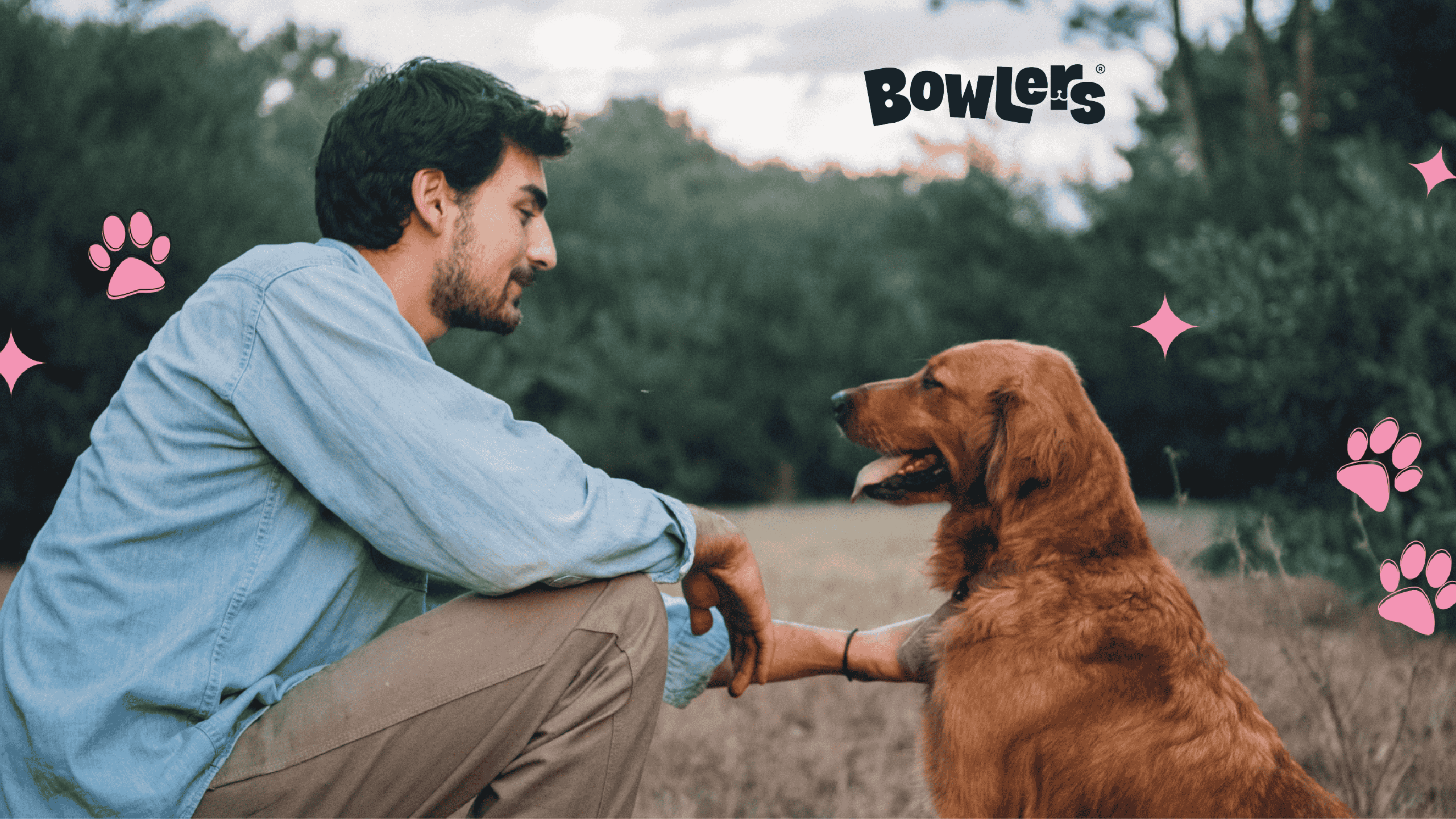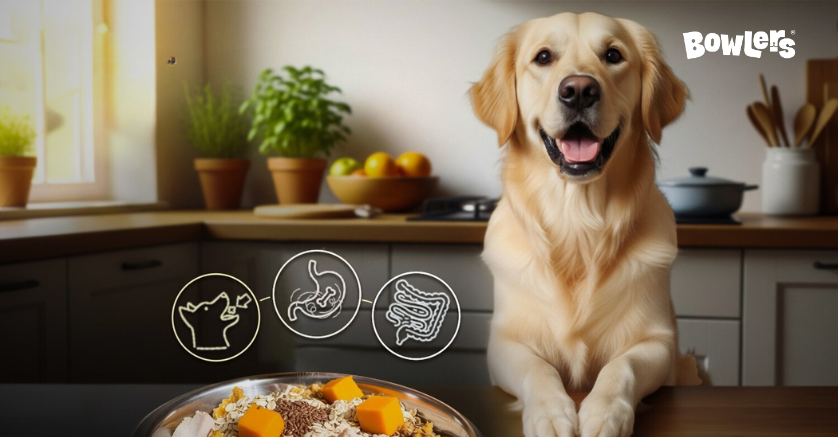Step-by-Step Guide to Teach your Dog Recall Commands

Table of contents
- What Is Recall Training and Why It Matters
- Before You Start: Set the Right Foundation
- Step-by-Step: How to Train Your Dog to Come
- Pro Tips for a Reliable Recall
- Off-Leash Recall: Training for Real-World Freedom
- Integrate Recall with Basic Obedience Commands
- Common Mistakes to Avoid
- Nutrition’s Role in Training Success
- Final Thoughts: Build Trust, Not Just Obedience
Teaching your dog to come when called is one of the most essential skills in basic dog training. It’s not just a command, it’s a life-saving habit that builds trust, obedience, and a deeper bond between you and your furry companion.
Whether you’re working with a curious puppy or an adventurous adult, this recall training for dogs guide will help you turn “Come!” into your dog’s favorite word.
What Is Recall Training and Why It Matters
Recall training means teaching your dog to return to you instantly, no matter what’s happening around them. A reliable recall command ensures safety in open spaces, off-leash walks, and social settings.
Strong recall:
- Prevents accidents and keeps your dog safe.
- Strengthens obedience and focus.
- Builds confidence and trust between pet and parent.
It’s a vital part of obedience training for dogs, just like “sit,” “stay,” and “heel” — but with even bigger real-world benefits.
Before You Start: Set the Right Foundation
Every successful training journey begins with preparation. Here’s how to set the stage for recall success.
Choose the Right Cue
Use one clear, consistent word such as “Come!” or “Here!” Avoid mixing multiple cues; consistency helps your dog understand faster.
Start Indoors
Puppies and beginners learn best in calm spaces without distractions. A quiet living room or garden corner works perfectly for the first few sessions.
Step-by-Step: How to Train Your Dog to Come
Follow this simple 5-step process to build strong recall habits:
1. Create Positive Association
Call your dog’s name in a cheerful tone followed by your cue: “Come!”
When they look your way or take a step toward you, immediately reward them with treats and praise. The goal is to make coming to you the most exciting thing ever.
2. Add Distance Gradually
Once your dog understands the cue, take a few steps back before calling them. Reward every time they respond. Gradually increase the distance but keep success easy early on.
3. Use a Long Leash for Outdoor Practice
A 10-15 ft training leash lets your dog explore safely. Call them back randomly; reward, praise, and let them go again. This teaches that coming to you doesn’t end the fun.
4. Introduce Mild Distractions
Move to slightly busier areas: your backyard, a quiet park, or a new room. Practice recall while adding gentle distractions like sounds or toys.
5. Reinforce and Repeat
Dogs learn through repetition. Practice recall daily for a few minutes, and always end with success. Reward sometimes with treats, sometimes with affection or play.
Pro Tips for a Reliable Recall
Want a recall that works every time — even off leash? Follow these reliable recall tips used by top trainers:
- Never punish your dog for coming late; they’ll associate recall with fear.
- Use excitement in your voice — dogs love happy energy.
- Vary rewards: Sometimes treats, sometimes play, sometimes cuddles.
- Practice during walks — call, reward, and release to keep it fun.
- End training on a positive note. Success builds enthusiasm.
Off-Leash Recall: Training for Real-World Freedom
When your dog responds reliably on leash, you can begin off-leash recall in a secure, fenced area.
- Start with your dog wearing a long line for safety.
- Call their name followed by your cue word.
- Run backward, clap, or crouch — use body language that excites them.
- Reward instantly when they return.
Keep sessions playful. The more fun your dog has coming back to you, the stronger the recall becomes.
Integrate Recall with Basic Obedience Commands
Recall training blends naturally with other beginner dog commands like “sit,” “stay,” and “leave it.” Combining them strengthens discipline and control.
Example training flow:
- Ask your dog to sit.
- Walk a few steps away.
- Use your recall cue (“Come!”).
- When they reach you, reward them and say “Stay.”
This simple routine improves listening skills and reinforces overall obedience.
Common Mistakes to Avoid
Even with the best intentions, some habits can slow progress. Avoid these:
- Calling only for negative moments (bath time or scolding).
- Repeating “Come!” over and over — say it once, confidently.
- Skipping rewards too soon — keep praise consistent.
- Chasing your dog when they ignore you turns training into a game of tag!
Patience, positivity, and consistency always win.
Nutrition’s Role in Training Success
A dog that feels good learns better. That’s why balanced nutrition matters as much as technique.
Bowlers Nutrimax Club Dog Food provides complete nourishment that supports focus, healthy digestion, and a glossy coat, making it ideal for active dogs in training. The balanced formula also helps in 3x reduction of stool odour and contributes to a reduced risk of diabetes, promoting long-term health and vitality.
Use small pieces of Bowlers Nutrimax Club Puppy Food as tasty training rewards. The grain-free formula is light and easy to digest, while its balanced nutrition helps your puppy stay energetic and focused during every lesson.
Final Thoughts: Build Trust, Not Just Obedience
Teaching recall isn’t just about commands, it’s about connection. Each successful “come” builds trust, communication, and joy between you and your dog.
Stay patient, keep it playful, and pair every lesson with affection and positive reinforcement. Over time, your dog will learn to respond instantly not because they’re told to, but because they want to. That’s the beauty of basic dog training tips done with right obedience that’s rooted in love.


